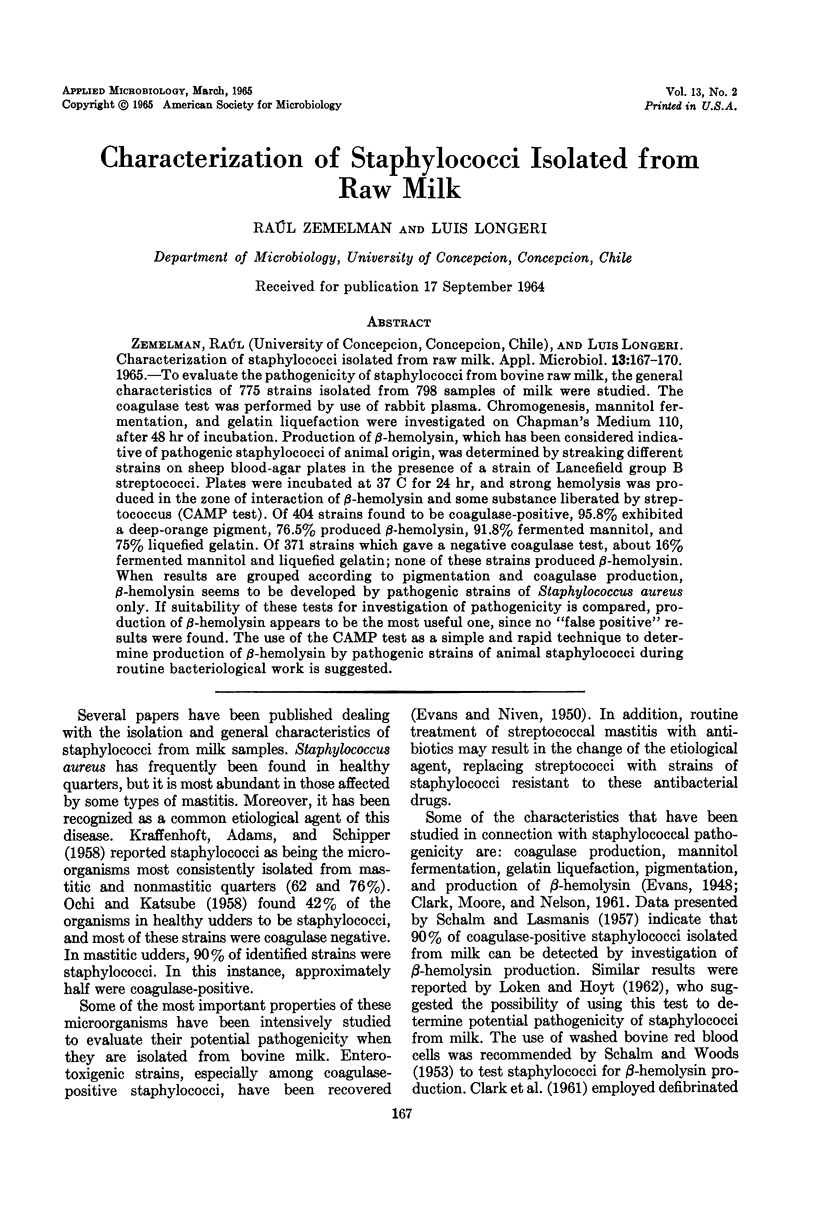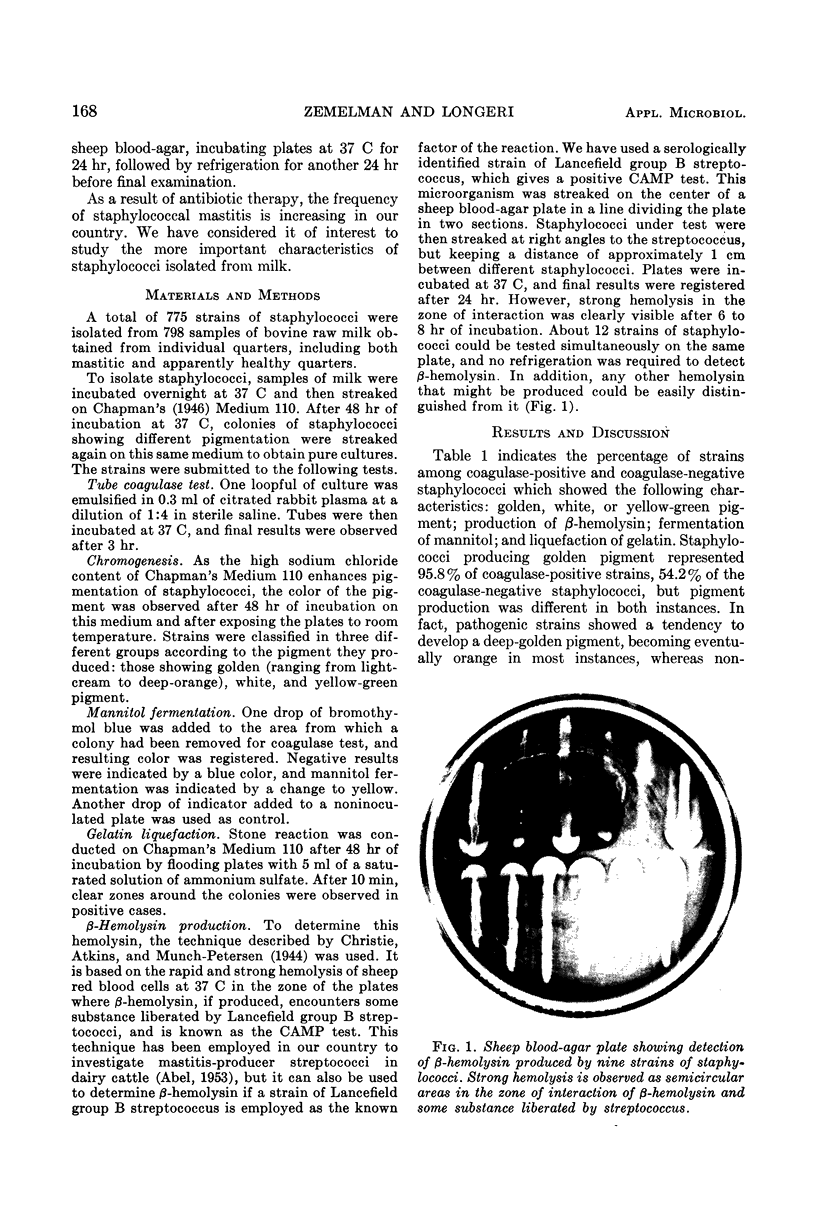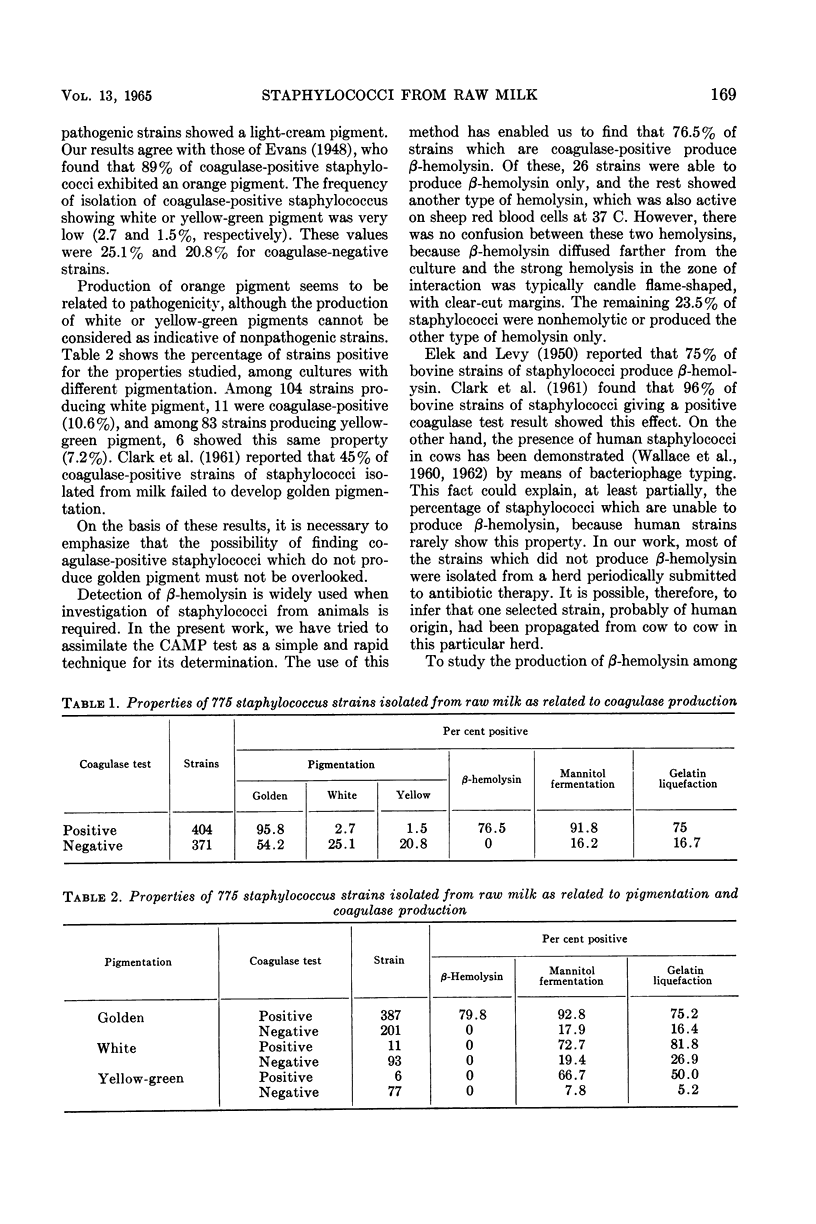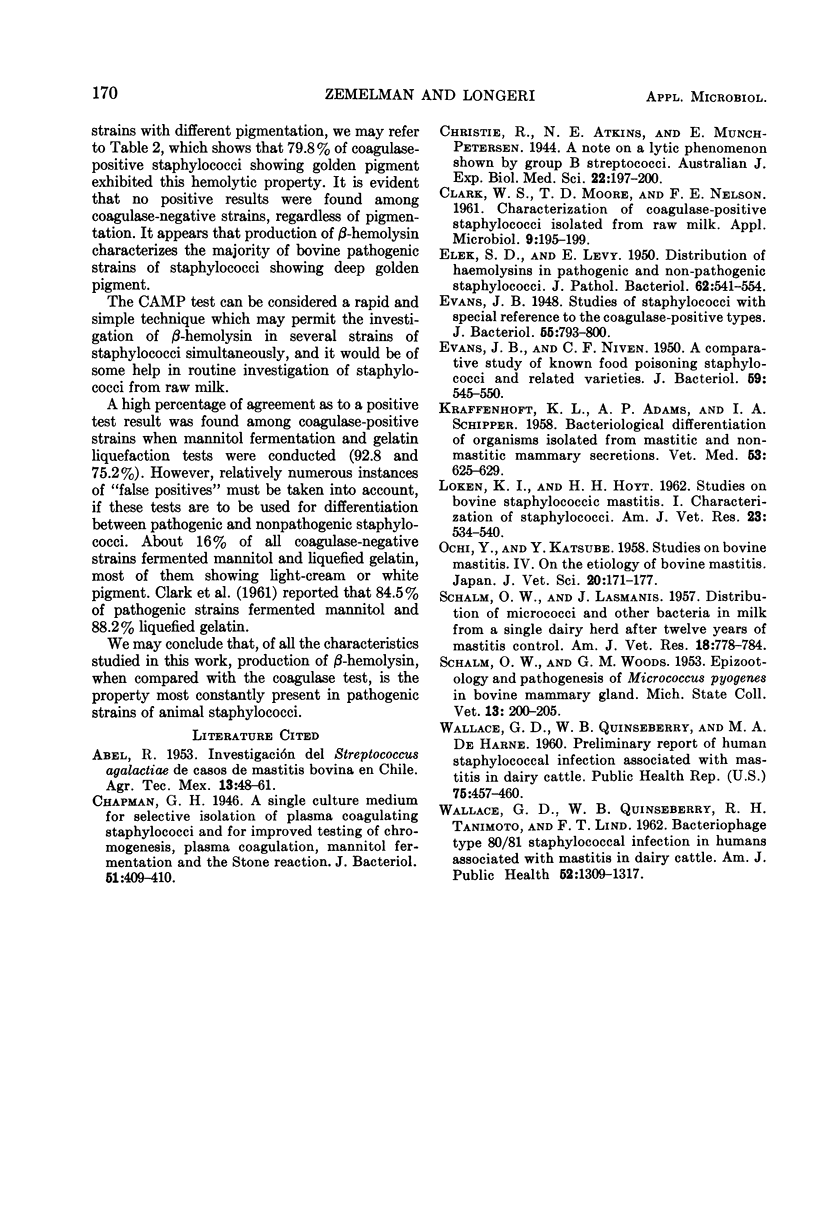Abstract
To evaluate the pathogenicity of staphylococci from bovine raw milk, the general characteristics of 775 strains isolated from 798 samples of milk were studied. The coagulase test was performed by use of rabbit plasma. Chromogenesis, mannitol fermentation, and gelatin liquefaction were investigated on Chapman's Medium 110, after 48 hr of incubation. Production of β-hemolysin, which has been considered indicative of pathogenic staphylococci of animal origin, was determined by streaking different strains on sheep blood-agar plates in the presence of a strain of Lancefield group B streptococci. Plates were incubated at 37 C for 24 hr, and strong hemolysis was produced in the zone of interaction of β-hemolysin and some substance liberated by streptococcus (CAMP test). Of 404 strains found to be coagulase-positive, 95.8% exhibited a deep-orange pigment, 76.5% produced β-hemolysin, 91.8% fermented mannitol, and 75% liquefield gelatin. Of 371 strains which gave a negative coagulase test, about 16% fermented mannitol and liquefied gelatin; none of these strains produced β-hemolysin. When results are grouped according to pigmentation and coagulase production, β-hemolysin seems to be developed by pathogenic strains of Staphylococcus aureus only. If suitability of these tests for investigation of pathogenicity is compared, production of β-hemolysin appears to be the most useful one, since no “false positive” results were found. The use of the CAMP test as a simple and rapid technique to determine production of β-hemolysin by pathogenic strains of animal staphylococci during routine bacteriological work is suggested.
Full text
PDF



Images in this article
Selected References
These references are in PubMed. This may not be the complete list of references from this article.
- CLARK W. S., Jr, MOORE T. D., NELSON F. E. Characterization of coagulase-positive staphylococci isolated from raw milk. Appl Microbiol. 1961 May;9:195–199. doi: 10.1128/am.9.3.195-199.1961. [DOI] [PMC free article] [PubMed] [Google Scholar]
- ELEK S. D., LEVY E. Distribution of haemolysins in pathogenic and non-pathogenic staphylococci. J Pathol Bacteriol. 1950 Oct;62(4):541–554. doi: 10.1002/path.1700620405. [DOI] [PubMed] [Google Scholar]
- EVANS J. B., NIVEN C. F., Jr A comparative study of known food-poisoning staphylococci and related varieties. J Bacteriol. 1950 Apr;59(4):545–550. doi: 10.1128/jb.59.4.545-550.1950. [DOI] [PMC free article] [PubMed] [Google Scholar]
- Evans J. B. Studies of Staphylococci with Special Reference to the Coagulase-positive Types. J Bacteriol. 1948 Jun;55(6):793–800. doi: 10.1128/jb.55.6.793-800.1948. [DOI] [PMC free article] [PubMed] [Google Scholar]
- LOKEN K. I., HOYT H. H. Studies on bovine staphylococcic mastitis. I. Characterization of staphylococci. Am J Vet Res. 1962 May;23:534–540. [PubMed] [Google Scholar]
- SCHALM O. W., LASMANIS J. Distribution of micrococci and other bacteria in milk samples from a single dairy herd after twelve years of mastitis control. Am J Vet Res. 1957 Oct;18(69):778–784. [PubMed] [Google Scholar]
- WALLACE G. D., QUISENBERRY W. B., DE HARNE M. A. Preliminary report of human staphylococcal infection associated with mastitis in dairv cattle. Public Health Rep. 1960 May;75:457–460. [PMC free article] [PubMed] [Google Scholar]
- WALLACE G. D., QUISENBERRY W. B., TANIMOTO R. H., LYND F. T. Bacteriophage type 80/81 staphylococcal infection in human beings associated with mastitis in dairy cattle. Am J Public Health Nations Health. 1962 Aug;52:1309–1317. doi: 10.2105/ajph.52.8.1309. [DOI] [PMC free article] [PubMed] [Google Scholar]



